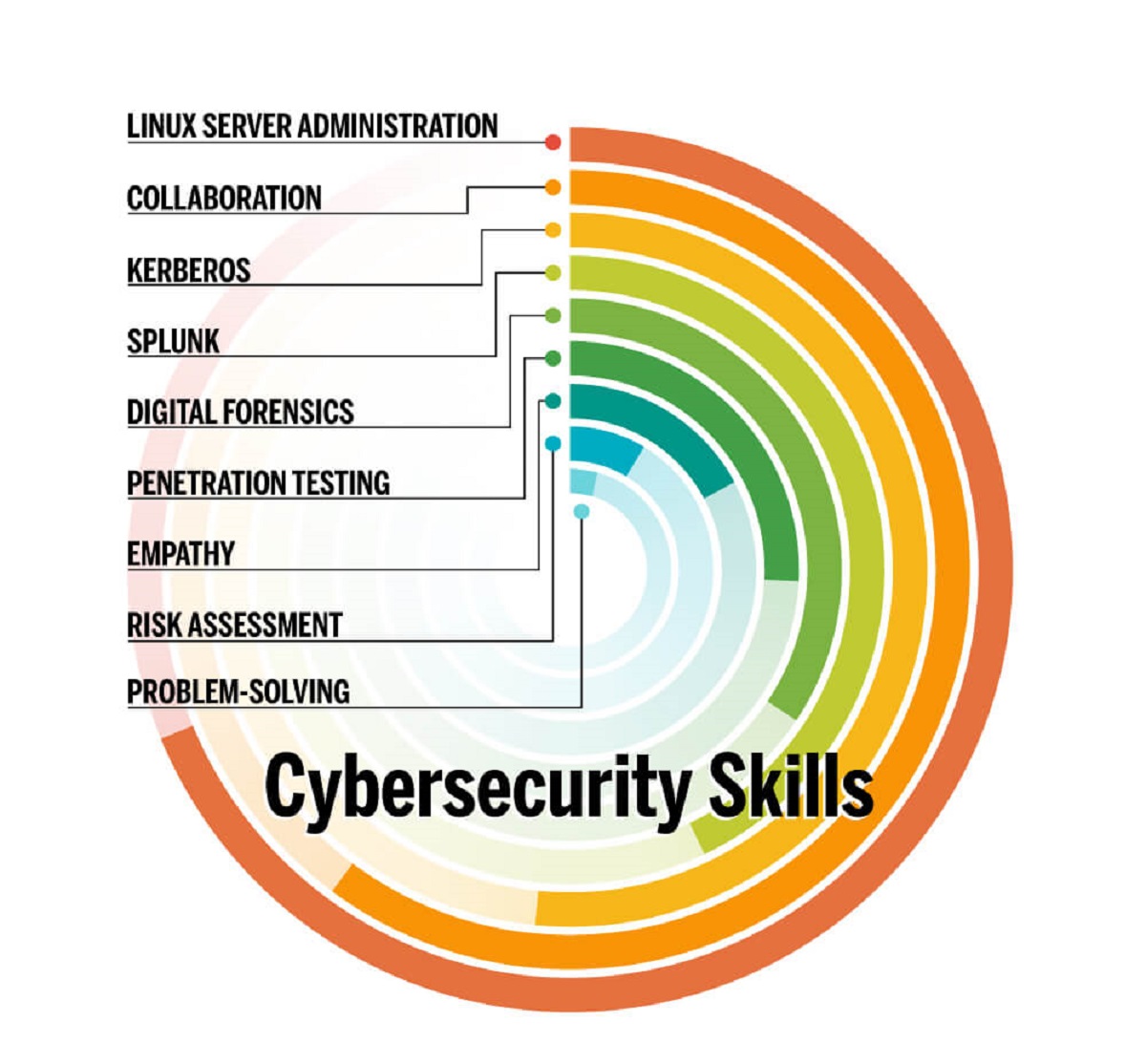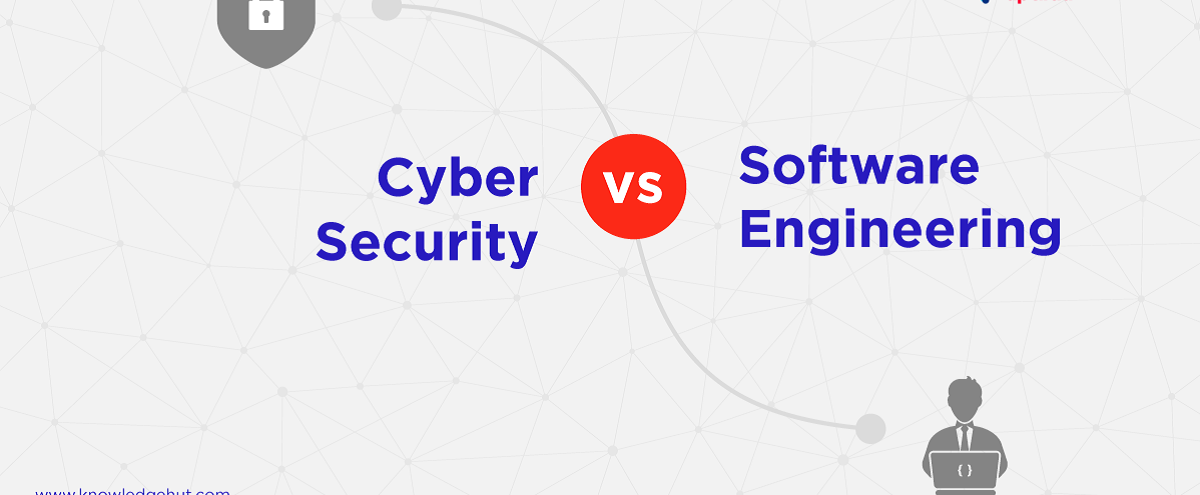Introduction
Cybersecurity is a rapidly growing field, with the constant rise in technology and the ever-increasing threat of cyber attacks. As businesses and individuals become more aware of the importance of protecting their digital assets, the demand for skilled cybersecurity professionals continues to soar. One key aspect of cybersecurity is coding, as it plays a crucial role in developing secure applications, uncovering vulnerabilities, and creating robust defense mechanisms.
Choosing the right coding languages for cybersecurity is essential to ensure effectiveness and efficiency in protecting sensitive information and systems. In this article, we will explore some of the best coding languages for cybersecurity and their unique features that make them suitable for securing digital assets.
It is important to note that there is no one-size-fits-all solution in cybersecurity. The choice of coding language depends on various factors, including the specific requirements of the project, the complexity of the system, and the expertise of the development team. However, the following coding languages have proven track records in the cybersecurity realm and are commonly used for building secure applications and systems.
Python
Python is a versatile and popular programming language, widely used in various domains, including cybersecurity. Its simplicity and readability make it an excellent choice for both beginners and experienced developers. Python’s extensive library ecosystem provides numerous tools and frameworks specifically designed for cybersecurity tasks.
Python offers powerful libraries such as Scapy, which enables packet manipulation and network scanning, and PyCrypto, which provides cryptographic functions for secure communication. The flexibility of Python allows developers to quickly prototype and develop cybersecurity tools and applications.
Moreover, Python’s integration capabilities make it ideal for automation and scripting tasks. For cybersecurity professionals, having the ability to automate repetitive tasks such as vulnerability scanning or log analysis can significantly increase efficiency and productivity.
Python is also widely used in web application security. Frameworks like Django and Flask provide robust security features, ensuring secure user authentication, input validation, and protection against common web vulnerabilities like cross-site scripting (XSS) and SQL injection.
Additionally, Python has excellent community support, with numerous online resources, forums, and libraries dedicated to cybersecurity. This makes it easy for developers to find help, learn new techniques, and stay up-to-date with the latest trends in cybersecurity.
In summary, Python’s simplicity, versatility, and extensive library ecosystem make it an ideal coding language for cybersecurity. Its readability and community support also contribute to its popularity among cybersecurity professionals. Whether it’s for developing tools, automating tasks, or securing web applications, Python proves to be a powerful ally in the battle against cyber threats.
C/C++
C and C++ are widely used programming languages in the world of cybersecurity, known for their efficiency, speed, and low-level control. These languages allow developers to have direct access to system resources and manipulate memory, making them ideal for tasks that require high performance and close hardware interaction.
One of the key advantages of using C/C++ for cybersecurity is their ability to create efficient and secure applications. The languages’ low-level control makes it easier to implement security measures like input validation, memory management, and encryption algorithms. As a result, C/C++ is often used in the development of antivirus software, firewalls, and intrusion detection systems.
C/C++ are also preferred languages for vulnerability exploitation and reverse engineering. Their direct memory manipulation capabilities allow security researchers to analyze and exploit software vulnerabilities, helping to identify weak points and improve overall system security.
Furthermore, C/C++ is the language of choice for kernel-level programming, as it allows developers to interface directly with the operating system. This is crucial for developing rootkits or system-level security tools that require deep access to the system’s core components.
Although C/C++ can have a steeper learning curve compared to other languages, mastering these languages opens up numerous opportunities in the cybersecurity field. Their speed, efficiency, and low-level control make them indispensable for tasks that require close hardware interaction, system-level programming, and vulnerability analysis.
In summary, C/C++ provide the ability to build secure and high-performance applications, making them preferred languages for cybersecurity professionals. Their low-level control and direct access to system resources allow for efficient memory management, encryption, and vulnerability analysis. If you are looking to dive into the depths of cybersecurity and work on challenging, low-level tasks, C/C++ should be on your radar.
Java
Java is a widely-used, platform-independent programming language that offers a robust and secure foundation for cybersecurity applications. Its versatility, rich API ecosystem, and strong security features make it a popular choice for developing secure and scalable software.
One of Java’s key advantages in cybersecurity is its built-in security features. Java provides a comprehensive security framework that includes features like access control, secure class loading, cryptography, and secure communication protocols. These built-in security mechanisms make it easier for developers to implement secure coding practices and protect against common security vulnerabilities.
Java’s platform independence allows cybersecurity applications to be deployed on multiple operating systems seamlessly. This flexibility is crucial in today’s dynamic and diverse computing environments, where systems may vary across different platforms and architectures.
Furthermore, Java’s extensive API ecosystem offers a wide range of libraries and frameworks that are specifically designed for cybersecurity. Libraries like Bouncy Castle provide support for advanced cryptographic algorithms, while frameworks like Spring Security simplify the implementation of authentication and authorization mechanisms.
Java’s maturity and stability also contribute to its popularity in the cybersecurity domain. Its long history and wide adoption ensure continuous improvement, thorough testing, and a strong community of developers and security experts. This makes it easier to find expertise, resources, and support when working on Java-based cybersecurity projects.
Additionally, Java’s object-oriented nature and strict syntax make it easier to write secure and maintainable code. The language’s emphasis on encapsulation, inheritance, and polymorphism helps mitigate the risk of code vulnerabilities and promotes code reuse.
In summary, Java’s built-in security features, platform independence, and extensive API ecosystem make it an excellent choice for developing secure and scalable cybersecurity applications. Its maturity and community support further enhance its suitability for cybersecurity projects. If you are looking for a versatile and reliable language for building secure software, Java should undoubtedly be on your list.
Ruby
Ruby is a dynamic, object-oriented programming language known for its simplicity and readability. While not as widely used in cybersecurity as some other languages, Ruby offers several features that make it a valuable tool in certain cybersecurity scenarios.
One of Ruby’s strengths is its focus on developer productivity and code maintainability. The language’s clean syntax and elegant design make it easy to write readable and concise code, which can be beneficial in rapidly developing and prototype applications for cybersecurity tasks.
Ruby also has a strong community and a number of powerful frameworks and libraries specifically tailored to cybersecurity needs. For example, the Metasploit Framework, a popular penetration testing tool, is written in Ruby and is widely used by security professionals for vulnerability assessment and exploitation.
Moreover, Ruby takes advantage of the Ruby on Rails web framework, which provides built-in security features. Rails offers robust mechanisms for protecting against common web vulnerabilities like cross-site scripting (XSS) and SQL injection, making it a great choice for developing secure web applications with rapid development cycles.
In addition, Ruby offers a feature called metaprogramming, which allows developers to dynamically modify and extend code during runtime. This can be useful in certain cybersecurity scenarios where runtime manipulation is required, such as analyzing malware behavior or performing runtime analysis on network traffic.
While Ruby may not be as widely used in the cybersecurity field as some other languages, its simplicity, productivity, and the availability of effective frameworks and libraries make it a valuable choice for specific tasks. Its clean syntax and community support contribute to the language’s appeal, and it’s worth considering for cybersecurity professionals seeking a dynamic and elegant language for their projects.
JavaScript
JavaScript is a versatile programming language that is primarily used for client-side web development. However, its capabilities extend beyond the browser, making it a valuable language in the field of cybersecurity.
One of the main advantages of JavaScript in the context of cybersecurity is its widespread usage. JavaScript is supported by all major web browsers, making it an essential language for web application security. Security measures like input validation, cross-site scripting (XSS) prevention, and content security policies are commonly implemented using JavaScript.
Additionally, JavaScript’s rise in popularity has led to the development of several powerful frameworks and libraries that aid in building secure web applications. Frameworks like Node.js and Express.js enable server-side JavaScript development, providing a robust ecosystem for developing secure and scalable applications.
Moreover, JavaScript is also used for implementing security features in the frontend, such as encryption and secure communication protocols. It allows for dynamic content generation and manipulation, which is useful for tasks like securing user data, handling user authentication, and protecting against cross-site request forgery (CSRF) attacks.
JavaScript’s versatility extends beyond web development. With the increasing use of IoT (Internet of Things) devices and the need for securing them, JavaScript can be used to develop custom security solutions. For example, JavaScript can be employed to implement secure communication protocols between devices, enforce access control, and detect and respond to security events.
Furthermore, JavaScript can be used for security testing and assessment. Various security testing frameworks and tools, such as OWASP ZAP and Burp Suite, utilize JavaScript for performing automated security scans, vulnerability testing, and penetration testing.
In summary, JavaScript’s wide adoption, versatility, and powerful frameworks make it an essential language in the field of cybersecurity. Its ability to handle web application security, support server-side development, and address IoT security challenges make it a valuable asset in securing modern digital ecosystems.
PHP
PHP is a popular server-side scripting language specifically designed for web development. While primarily known for its use in creating dynamic websites, PHP also has several features that make it relevant in the field of cybersecurity.
One of PHP’s significant advantages is its extensive library of security functions and frameworks. PHP provides built-in functions for data filtering and validation, encryption, secure file handling, and input sanitization, making it easier for developers to implement robust security measures in their web applications.
Furthermore, PHP frameworks like Laravel and Symfony offer built-in security features and follow industry best practices, such as protection against cross-site scripting (XSS), cross-site request forgery (CSRF), and SQL injection attacks. These frameworks simplify the process of developing secure web applications by providing secure coding guidelines and handling many security concerns out of the box.
PHP’s popularity also means that it has a large and active community. This community continuously contributes to improving PHP’s security by identifying and patching vulnerabilities, sharing best practices, and creating secure coding standards. This level of community support is invaluable for staying updated on emerging threats and security techniques.
Furthermore, PHP is often used in conjunction with other tools and frameworks to strengthen cybersecurity practices. For example, PHP can be combined with the open-source web application firewall (WAF) ModSecurity to provide an additional layer of protection against common web-based attacks.
Finally, PHP’s compatibility with various database systems allows for secure handling of sensitive data. Properly implementing secure practices in PHP can mitigate risks associated with database vulnerabilities and protect against unauthorized access or data breaches.
In summary, PHP, with its vast library of security functions, frameworks, and a thriving community, is a reliable choice for developing secure web applications. Its built-in security features, combined with proper coding practices, can help protect against common web vulnerabilities and strengthen the overall security posture of web-based systems.
Go
Go, also known as Golang, is a modern, statically-typed programming language that has gained significant popularity in recent years. While initially developed for system software, Go has found its place in the cybersecurity world due to its simplicity, performance, and built-in support for security features.
One of the key advantages of using Go in cybersecurity is its efficiency. Go is known for its fast execution speed and low memory footprint, making it ideal for building high-performance cybersecurity applications. This is particularly important in time-sensitive tasks like network packet analysis or real-time threat detection and response.
Go also offers built-in support for concurrency, allowing developers to take advantage of multi-threading and parallel processing. This is beneficial for tasks that require handling multiple connections or processing large amounts of data simultaneously, such as network scanning or distributed denial-of-service (DDoS) attack mitigation.
Furthermore, Go has strong support for secure coding practices. It provides a robust standard library that includes cryptographic functions, secure file handling, and secure input/output operations. Go’s simplicity and explicit error handling make it easier to write secure code by reducing the risk of common vulnerabilities like buffer overflows, race conditions, and resource leaks.
Additionally, the Go programming language has a strong focus on code readability and simplicity, making it easier to write and maintain secure code. Its strict typing and enforced code style guidelines further contribute to writing more reliable and secure applications.
Moreover, Go’s cross-platform compatibility allows for the development of cybersecurity tools that can be deployed on various operating systems and architectures. This flexibility is crucial for building versatile tools that can be used across different environments.
In summary, Go’s efficiency, built-in support for security features, and focus on simplicity make it a promising language for cybersecurity. Its fast execution speed and low resource usage enable the development of high-performance security applications, while its secure coding practices contribute to writing reliable and resilient code. If you’re looking for a modern language that combines performance and security, Go is definitely worth considering.
PowerShell
PowerShell is a powerful scripting language developed by Microsoft specifically for system administration and automation. While its primary use is for Windows system management, PowerShell has gained significant traction in the cybersecurity community due to its extensive capabilities in managing and securing Windows environments.
One of the key advantages of using PowerShell for cybersecurity is its deep integration with the Windows operating system. PowerShell provides direct access to the underlying Windows APIs, enabling administrators and security professionals to perform a wide range of security-related tasks, such as managing user accounts, auditing log data, and configuring security policies.
PowerShell has a rich set of built-in cmdlets (commands) that can be used to automate security tasks and perform security operations effectively. These cmdlets allow for tasks such as remote administration, event log analysis, and malware detection. PowerShell also supports the use of modules, which provide additional functionality for tasks like vulnerability scanning and incident response.
Furthermore, PowerShell’s scripting capabilities enable the creation of custom tools and workflows tailored to specific cybersecurity needs. Security teams can leverage PowerShell scripts to automate incident response processes, perform forensic analysis on compromised systems, or conduct security assessments.
PowerShell also has robust security features that aid in secure scripting and secure administration. It supports digital signatures to authenticate and validate scripts, ensuring that scripts are from trusted sources. Additionally, PowerShell allows for the implementation of role-based access control (RBAC) and auditing capabilities, enhancing security and accountability within the IT infrastructure.
Moreover, PowerShell’s ability to interact with other technologies and APIs expands its applications in cybersecurity. It can interface with network devices, databases, and web services, allowing for seamless integration with various security tools and systems.
In summary, PowerShell’s integration with the Windows operating system, extensive cmdlets and modules, scripting capabilities, and security features make it a valuable asset in the cybersecurity field. Its ability to automate security tasks, perform forensic analysis, and manage security policies within Windows environments makes PowerShell an essential tool for cybersecurity professionals and system administrators.
Swift
Swift is a modern and powerful programming language developed by Apple, primarily used for developing iOS, macOS, watchOS, and tvOS applications. While primarily associated with mobile app development, Swift has increasingly gained recognition in the cybersecurity realm due to its security-focused features and strong memory safety mechanisms.
One of the key advantages of using Swift in cybersecurity is its emphasis on safety and security. Swift incorporates features like optionals, which ensure that variables are always initialized before use, reducing the risk of null pointer exceptions. Additionally, Swift applies strict type checking, preventing common programming errors and vulnerabilities associated with type mismatches.
Another notable security feature of Swift is its memory safety mechanisms, such as automated memory management through ARC (Automatic Reference Counting) and the elimination of common memory-related vulnerabilities like buffer overflows and dangling pointers.
Furthermore, Swift includes built-in support for encryption and cryptographic operations, making it convenient for encryption-related tasks in cybersecurity. The CryptoKit framework in Swift provides a high-level API for performing cryptographic operations, such as hashing, symmetric and asymmetric encryption, and secure random number generation.
In addition to its security-oriented features, Swift’s clean and expressive syntax promotes code readability and maintainability. This is vital in cybersecurity, where clear and understandable code is crucial for identifying vulnerabilities and ensuring secure development practices.
Moreover, Swift benefits from being an open-source language, which fosters a strong community of developers and security experts. This community actively contributes to the identification and resolution of security vulnerabilities, provides tutorials and resources, and collaborates on security best practices.
While Swift is primarily associated with mobile app development, it can also be used for building security tools and utilities. Its cross-platform compatibility allows for the development of security tools that target different Apple platforms, and combined with Apple’s extensive security infrastructure, Swift can be utilized to build secure and reliable cybersecurity applications.
In summary, Swift’s focus on safety and security, memory safety mechanisms, built-in encryption support, and readability make it a promising language for cybersecurity. Its association with Apple’s security ecosystem and the active community contribute to its relevance in building secure applications and tools in the iOS and macOS environments.
Conclusion
In the ever-evolving landscape of cybersecurity, choosing the right coding language is crucial for ensuring the development of secure and robust applications. While there is no one-size-fits-all solution, several coding languages stand out for their unique features and suitability for cybersecurity tasks.
Python, with its versatility and extensive library ecosystem, proves to be a popular choice for building secure applications, automating tasks, and conducting web application security.
C/C++, known for its efficiency and low-level control, is a go-to language for developing secure software, vulnerability exploitation, and kernel-level programming.
Java, with its built-in security features and platform independence, offers a robust foundation for developing secure and scalable cybersecurity applications, both on the web and in the broader digital ecosystem.
Ruby, although not as widely used, brings simplicity, productivity, and powerful frameworks for specific cybersecurity tasks like penetration testing and web application security.
JavaScript, with its wide adoption, versatility, and powerful frameworks, plays a critical role in web application security and securing IoT devices.
PHP, known for its extensive library of security functions and frameworks, is a reliable choice for developing secure web applications and protecting sensitive data.
Go, with its efficiency, built-in security features, and focus on simplicity, is a promising language for developing high-performance cybersecurity applications and handling tasks like network packet analysis.
PowerShell, with its deep integration with Windows and extensive cmdlets, offers powerful capabilities for managing and securing Windows environments.
Swift, primarily used for mobile app development, provides security-focused features, memory safety mechanisms, and encryption support, making it a relevant choice for building secure iOS and macOS applications.
While these coding languages stand out in the realm of cybersecurity, it’s important to note that the choice of language should align with the specific requirements of the project, the expertise of the development team, and the complexity of the system at hand.
Ultimately, the effectiveness of cybersecurity measures depends on not just the coding language, but also on secure coding practices, adherence to industry standards, and ongoing monitoring and updates. As the cybersecurity landscape continues to evolve, staying informed about emerging threats and maintaining a proactive approach to security is essential.

























